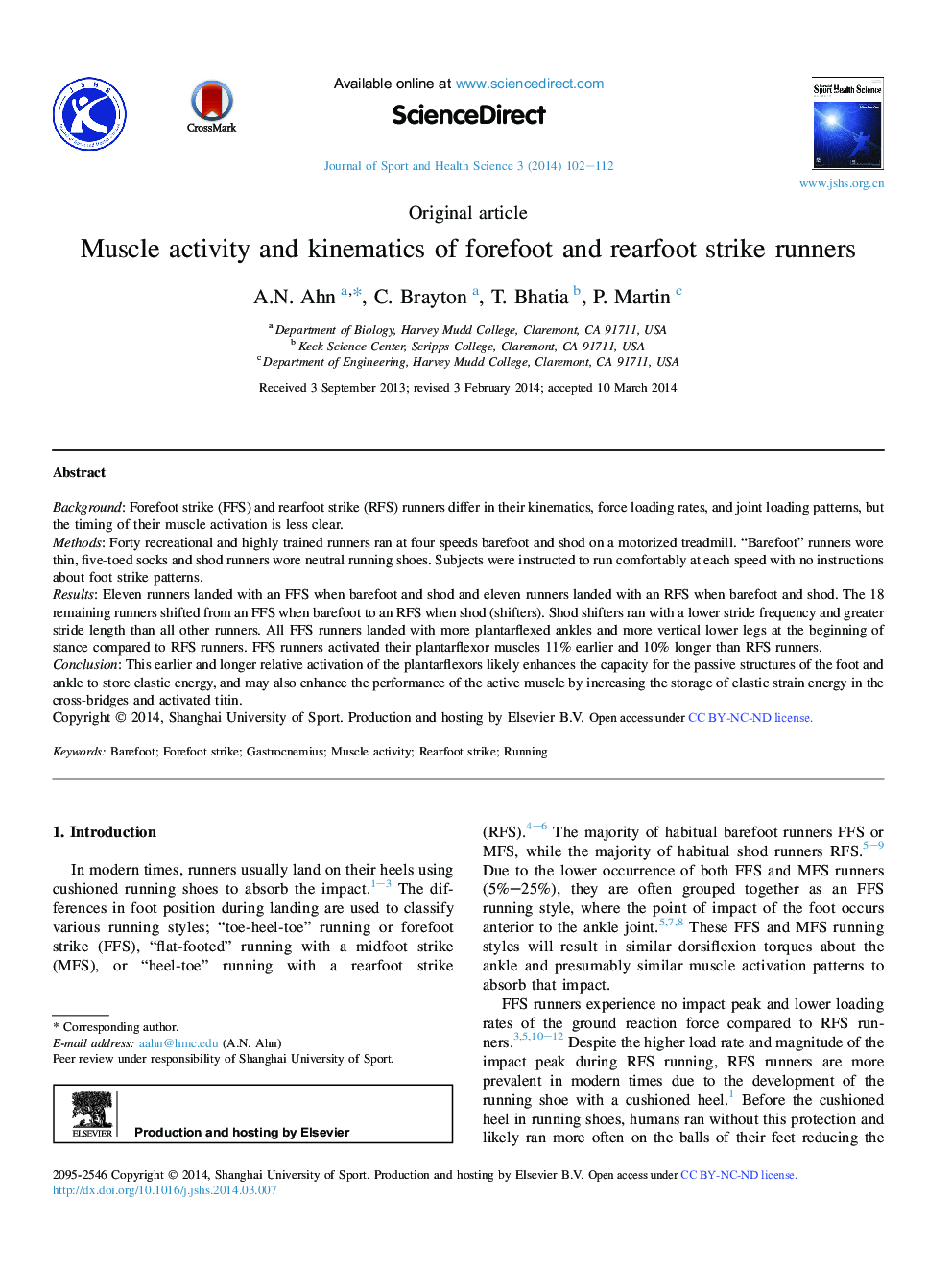| کد مقاله | کد نشریه | سال انتشار | مقاله انگلیسی | نسخه تمام متن |
|---|---|---|---|---|
| 1084137 | 951260 | 2014 | 11 صفحه PDF | دانلود رایگان |
BackgroundForefoot strike (FFS) and rearfoot strike (RFS) runners differ in their kinematics, force loading rates, and joint loading patterns, but the timing of their muscle activation is less clear.MethodsForty recreational and highly trained runners ran at four speeds barefoot and shod on a motorized treadmill. “Barefoot” runners wore thin, five-toed socks and shod runners wore neutral running shoes. Subjects were instructed to run comfortably at each speed with no instructions about foot strike patterns.ResultsEleven runners landed with an FFS when barefoot and shod and eleven runners landed with an RFS when barefoot and shod. The 18 remaining runners shifted from an FFS when barefoot to an RFS when shod (shifters). Shod shifters ran with a lower stride frequency and greater stride length than all other runners. All FFS runners landed with more plantarflexed ankles and more vertical lower legs at the beginning of stance compared to RFS runners. FFS runners activated their plantarflexor muscles 11% earlier and 10% longer than RFS runners.ConclusionThis earlier and longer relative activation of the plantarflexors likely enhances the capacity for the passive structures of the foot and ankle to store elastic energy, and may also enhance the performance of the active muscle by increasing the storage of elastic strain energy in the cross-bridges and activated titin.
Journal: Journal of Sport and Health Science - Volume 3, Issue 2, June 2014, Pages 102–112
